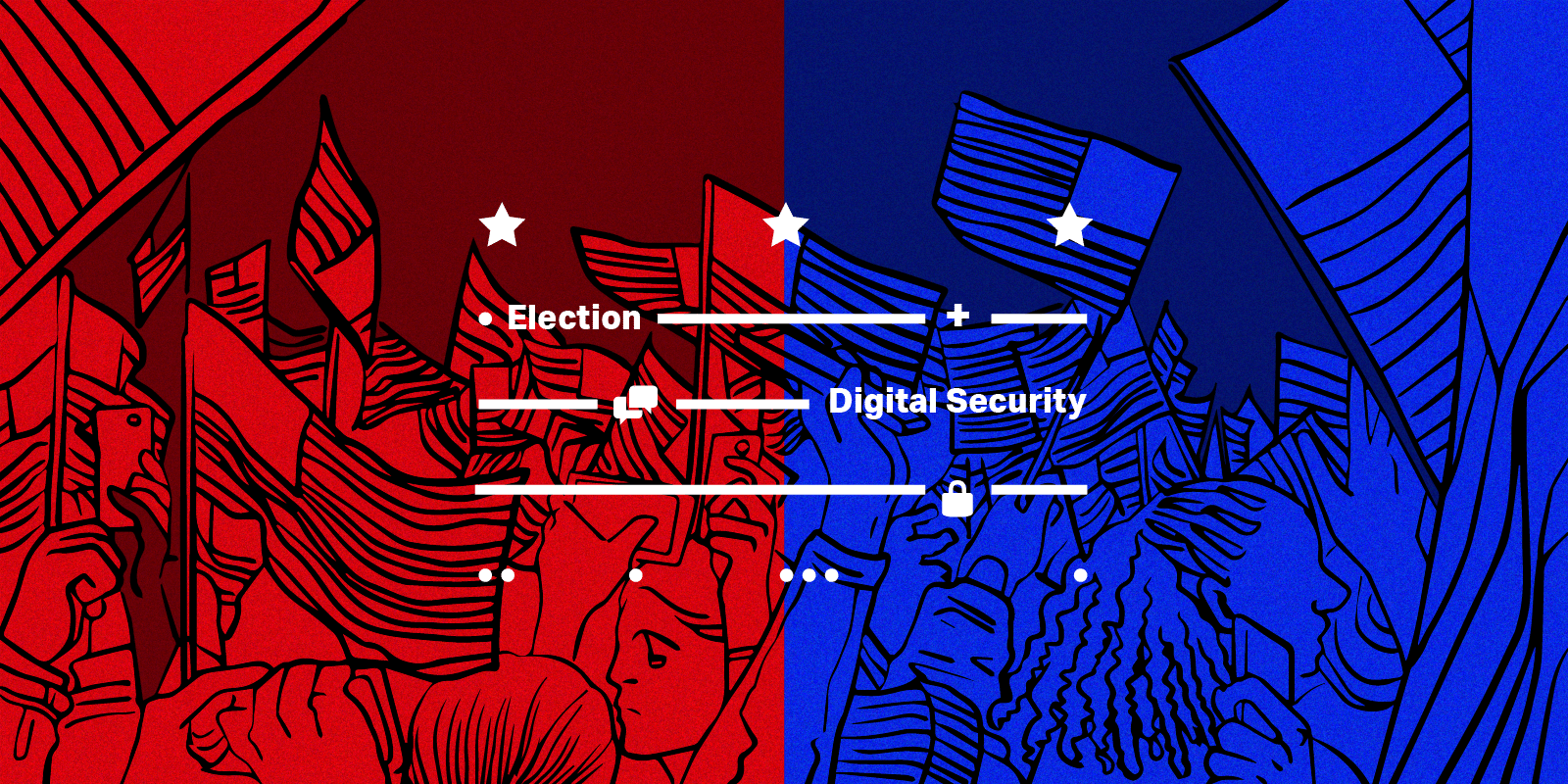As the U.S. braces for one of its most contentious elections, online tensions are running high. This year, thanks in large part to the COVID-19 crisis, we have become even more reliant on digital tools to communicate, document human rights abuses, and access information, employment, healthcare, and much more. 2020 has also seen the global rise of the racial justice movement Black Lives Matter, largely organized online, following the police killing of George Floyd in Minneapolis. Civic space is taking root and blossoming online in profound ways. And, importantly, this digital discourse leads to both tangible human rights victories and indelible offline harms.
This election season, digital activists are at increased risk of police surveillance, cyber attacks, harassment, and censorship in the U.S. Black activists face unlawful surveillance, including invasive social media monitoring. To ensure that you can exercise your rights safely, we’ve compiled some digital security tips with you in mind.
The following tips are generated with Infogram. Be sure to check your privacy-enhancing browser extensions for the best view experience.
Measure your risk
It is important to get a sense of where you are on the risk spectrum to keep yourself safe from digital attacks. To do so, we created this booklet to help you take a first look at digital security. It walks you through your digital risk profile, and helps you consider the different digital risk scenarios you may encounter. EFF’s Surveillance Self Defense Guide also provides security 101 tips for people who are new to this field. For those who are looking for data detox, read the Data Detox Kit by Tactical Tech, use the Security Planner by Consumer Reports, or consult the Digital First Aid Kit by CiviCERT.
Secure your online accounts
Securing your digital accounts is the first step to protect yourself from cyber attacks. Follow the steps below to check and build your account security:
[tabs]
[tab title=”Step 1″]
[/tab]
[tab title=”Step 2″]
[/tab]
[tab title=”Step 3″]
[/tab]
[tab title=”Step 4″]
[/tab]
[tab title=”Step 5″]
[/tab]
[tab title=”Step 6″]
[/tab]
[/tabs]
Protect yourself from mass surveillance online and off
If you’re planning to protest, do so safely — online and off. Many organizations in the U.S. provide field manuals and step-by-step guides to help you navigate how to protect yourself from mass surveillance. Follow the steps below to defend yourself from mass surveillance:
Stay connected and evade censorship
If you lose cell signal at an event, have trouble connecting to the internet, or can’t visit a website or social media platform, you may be experiencing a network disruption or censorship. Here are some tips to get back online:
Defend against online harassment
Women, people of color, LGBTQ folks, journalists, and other at-risk groups face higher rates of threats and violence online. Our Self-Doxing Guide (to prevent doxing, which is when people maliciously reveal your personal info online) provides recommendations. Here are some highlights:
Need further help?
If you are an activist, journalist, or human rights defender, or with a civil society organization, you can contact Access Now’s Digital Security Helpline for direct tech assistance, available 24/7 free of charge.
